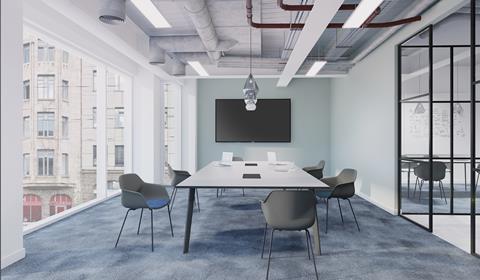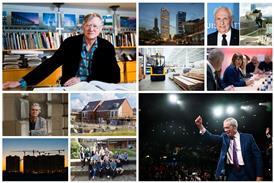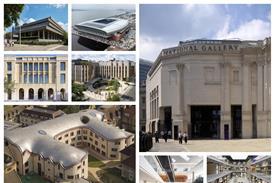Document tells employers to make results public before asking staff to return to work

The government last night finally published new guidance on what employers need to do to make workplaces safe for employees to return as lockdown restrictions are relaxed.
The guidance was published by the Department for Business, Energy and Industrial Strategy a day after Boris Johnson urged people to return to work as part of the first phase of a plan to lift lockdown restrictions.
Employers are now required to provide a risk assessment and Johnson promised: “Employers will not be allowed to get away with forcing people to work in conditions that are not covid-secure.”
On the risk assessment, employers are told: “You should share the results of your risk assessment with your workforce. If possible, you should consider publishing the results on your website (and we would expect all businesses with over 50 workers to do so).”
On Sunday, the prime minister said that all those who can work from home should continue to do so, but that those who can’t, should return to work.
The guidance sets out in broad terms what the government will expect to be included in safe working strategies from employers from Wednesday this week, when the easing of lockdown measures begins to take effect in England.
As well as guidance for those working in construction, it includes other work locations, from offices and people’s homes to shops, factories and warehouses.

It was not immediately apparent to what extent the guidance differs from the existing guidance for working on construction sites, produced by the Construction Leadership Council, which has been in force since shortly after the lockdown was brought in. In addition, the document didn’t make clear whether it was designed to be read alongside the existing CLC guidance, or whether it should supersede it.
The guidance for construction can be found here.
>> Also read: Architects plan return to offices after PM’s speech
>> Also read: Government’s exit strategy: What you need to know
What the guidance says
The 31-page document has been broken down into eight chapters with some of the advice listed below.
Coming to work and leaving work
Staggering arrival and departure times at work to reduce crowding into and out of the workplace, taking account of the impact on those with protected characteristics.
Providing additional parking or facilities such as bike-racks to help people walk, run, or cycle to work where possible.
Limiting passengers in corporate vehicles, for example, work minibuses. This could include leaving seats empty.
Reducing congestion, for example, by having more entry points to the workplace.
Using markings and introducing one-way flow at entry and exit points.
Providing handwashing facilities, or hand sanitiser where not possible, at entry and exit points.
Providing alternatives to touch-based security devices such as keypads.
Defining process alternatives for entry/exit points where appropriate, for example deactivating pass readers at turnstiles in favour of showing a pass to security personnel at a distance.
Moving around buildings and worksites
Reducing movement by discouraging non-essential trips within buildings and sites, for example, restricting access to some areas, encouraging use of radios or telephones, where permitted, and cleaning them between use.
Restricting access between different areas of a building or site.
Introducing more one-way flow through buildings.
Using signage such as ground markings or being creative with other objects to mark out 2m to allow controlled flows of people moving throughout the site
Reducing maximum occupancy for lifts, providing hand sanitiser for the operation of lifts and encouraging use of stairs wherever possible. Making sure that people with disabilities are able to access lifts.
Separating sites into working zones to keep different groups of workers physically separated as much as practical.
Planning site access and ‘area of safety’ points to enable social distancing.
Reducing the number of people in attendance at site inductions and consider holding them outdoors wherever possible with social distancing.
Regulating use of high traffic areas including corridors, lifts, turnstiles and walkways to maintain social distancing.
Workplaces and workstations
Workstations should be assigned to an individual and not shared. If they need to be shared they should be shared by the smallest possible number of people.
If it is not possible to keep workstations 2m apart then businesses should consider whether that activity needs to continue for the business to operate and if so take all mitigating actions possible to reduce the risk of transmission.
Review layouts and processes to allow people to work further apart from each other.
Using floor tape or paint to mark areas to help workers keep to a 2m distance.
Only where it is not possible to move workstations further apart, arranging people to work side by side or facing away from each other rather than face-to-face.
Only where it is not possible to move workstations further apart, using screens to separate people from each other.
Managing occupancy levels to enable social distancing.
Avoiding use of hot desks and spaces and, where not possible, for example training facilities, cleaning and sanitising workstations between different occupants including shared equipment.
Meetings
Using remote working tools to avoid in-person meetings.
Only absolutely necessary participants should attend meetings and should maintain 2m separation throughout.
Avoiding transmission during meetings, for example avoiding sharing pens and other objects.
Providing hand sanitiser in meeting rooms.
Holding meetings outdoors or in well-ventilated rooms whenever possible.
For areas where regular meetings take place, using floor signage to help people maintain social distancing.
Common areas
Working collaboratively with landlords and other tenants in multi-tenant sites/buildings to ensure consistency across common areas, for example, receptions, staircases.
Staggering break times to reduce pressure on break rooms or places to eat.
Using safe outdoor areas for breaks.
Creating additional space by using other parts of the workplace freed up by remote working.
Reconfiguring seating and tables to maintain spacing and reduce face-to-face interactions.
Installing screens to protect staff in receptions or similar areas.
Shift patterns and working groups
As far as possible, where people are split into teams or shift groups, fixing these teams or shift groups so that where contact is unavoidable, this happens between the same people
Identifying areas where people have to directly pass things to each other, such as shared tools, materials or job instructions, and find ways to remove direct contact, for example by using drop-off points or transfer zones
For those workers who are required to travel and stay away from home in onsite accommodation, creating fixed groups of workers so that where contact is unavoidable, this happens between the same people
Minimising worker congregation at bottlenecks such as timeclocks, entrances and exits and maintaining social distancing during shift handovers
















No comments yet